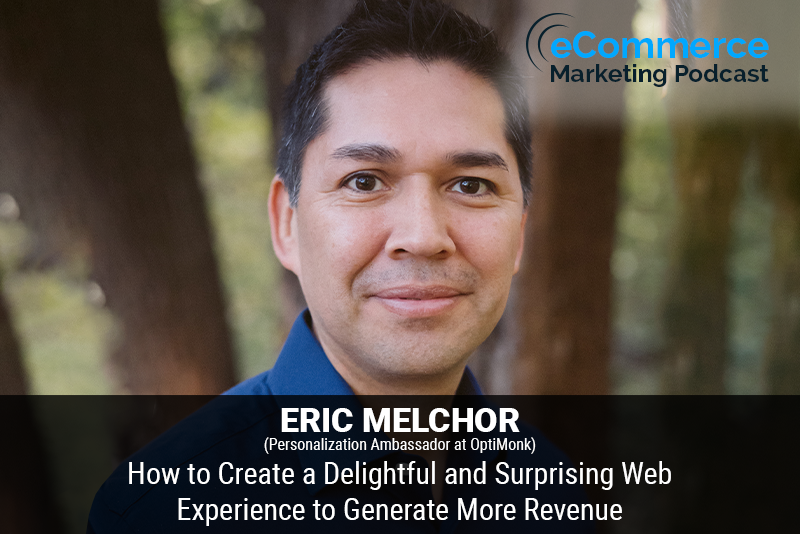
The eCommerce Marketing Podcast walks you through everything that goes into ecommerce marketing — from inbound marketing to paid advertising to conversions. Learn the strategies top marketing experts use to grow their businesses.
Eric Melchor is the Personalization Ambassador at OptiMonk and host of the Innovators can Laugh podcast. After overseeing online marketing programs for major companies in Texas, Eric moved to Eastern Europe and started working in SaaS. Since then he has worked for customer personalization obsessed startups like Bonjoro and OptiMonk and is currently providing mentoring for SaaS companies who are starting Partnership marketing channels or want to create fun personalized shopping experiences with ease.
In this episode, you will learn
- Why is it important to create a surprising and unique web experience for your site visitors
- What are some ways to delight your visitors and intrigue them when they visit your site
- What are some examples of a poor digital experience and what are some things you should avoid doing
- Examples of some ecommerce brands that have created truly unique digital experiences that have translated to an increase in revenue.
For show transcript and past guests, please visit https://www.ecommercemarketingpodcast.com
Or on YouTube at:
https://www.youtube.com/channel/UC3PgT0NOGzpdPGQtBK0XLIQ
Follow Arlen:
Twitter: https://twitter.com/askarlen
Facebook: https://www.facebook.com/arlen.robinson.7
Instagram: https://www.instagram.com/arlenyohance/
LinkedIn: https://www.linkedin.com/in/arlenrobinson/
Past guests on the ecommerce marketing podcast include Neil Patel, Nemo Chu, Luke Lintz, Luke Carthy, Amber Armstrong, Kris Ruby and many more.
Thanks for listening. Be sure to subscribe and leave a review.

In this episode of the e-Commerce Marketing Podcast, host Arlen Robinson speaks with Eric Melchor, Personalization Ambassador at OptiMonk and host of the Innovators Can Laugh podcast. Eric shares his journey from overseeing online marketing programs for major companies in Texas to moving to Eastern Europe and working with SaaS startups. He provides valuable insights into the importance of creating unique and surprising web experiences to engage customers and drive conversions.
Key Takeaways:
- Importance of Unique Web Experiences (00:05:39)
- Creating a unique web experience is crucial to stand out in a competitive market and keep customers engaged.
- Personalization Examples (00:08:00)
- Tools like OptiMonk enable even small marketers to implement personalization on their websites, which was previously only available to big companies like Netflix and Amazon.
- Global E-commerce Personalization (00:10:22)
- Example: Woodhouse Clothing reassures international visitors by displaying messages about local shipping, currency, and taxes, increasing customer confidence and reducing bounce rates.
- Mobile Visitor Engagement (00:13:10)
- Example: Blend Jet’s approach to engaging mobile visitors by offering a coupon code via a popup message, resulting in over a million subscribers in one year.
- Using UTM Parameters for Personalization (00:20:44)
- Example: Blend Jet’s strategy of changing landing page headlines based on UTM parameters from ads, ensuring consistency and relevance in messaging.
- Gamification for Higher Engagement (00:23:27)
- Example: Winc.com’s quiz for wine selection, leading to a 70-80% conversion rate for collecting email addresses.
- Common Mistakes in Digital Experiences (00:27:02)
- Avoid generic popups asking for email addresses without knowing anything about the visitor. Instead, use exit-intent popups for better user experience.
Guest Information:
Eric Melchor
- Personalization Ambassador at OptiMonk
- Host of the Innovators Can Laugh podcast
- LinkedIn: Eric Melchor
- Website: OptiMonk











